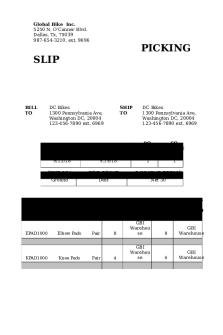Blackberry Picking poem- Essay PDF

| Title | Blackberry Picking poem- Essay |
|---|---|
| Course | Writing II |
| Institution | Baruch College CUNY |
| Pages | 3 |
| File Size | 68.2 KB |
| File Type | |
| Total Downloads | 40 |
| Total Views | 148 |
Summary
Mandatory assignment to get a good grade in the course...
Description
Nicholas Nerys Mr. Curiale English 12 AP Blackberry-Picking By Seamus Heaney
One may be able to connect to this piece in many various ways. Such interpretations might be more of a Eucharistic view, another could be the loss of innocence, the process of sexual acts, the difference between childhood and adulthood, or simply just the process of picking blackberries. All of these interpretations can be easily supported with many statements or phrases in this poem. I believe this poem is more directed with a Eucharistic style approach. With a little research and background knowledge, I learned that the poet, Seamus Heaney, was a very religious child, going to church every Sunday with his family. With the reference to the death of Jesus Christ, the last supper and sipping of wine, and the thorns Jesus wore across his head, one can make an easy connection to the poet’s reference. For any person who goes to Church, especially the poet as a child growing up, a person will understand the next symbol of the “summer’s blood.” (Line 6). The whole phrase, “Like thickened wine: summer’s blood was in it Leaving stains upon our tongue…” If looking at it from a religious perspective, anyone can easily tell that this line is referring to the Eucharist dinner, also known as the Last Supper. During the process of Communion, one must eat a piece of Holy Bread, the body of Christ, and drink red wine, the blood of Christ. These are all taking place through your mouth, especially your tongue. The connection of berries leaving red stains
on your tongue after eating them can also refer to the red stain on your tongue after you drink the red wine. In the year 30 AD, Jesus Christ was crucified, and he died. He was just 33 years old. In stanza one, lines 9-11, the reference and symbols of two “3”‘s are shown. The first set of “3” is “…milk cans, pea tins, and jam pots…” These are infused with the poem because they all sound similar to each other, these “3” objects were used to put the blackberries in. Just two lines later, the poet writes “…hayfields, cornfields, and potato drills…” Once again, these are all related to blackberry picking, and its process. We have two sets of “3” similar objects. This turns out to be 33, the age that Jesus Christ was crucified. Even though this is not so noticeable to a reader, with other religious connections made throughout the poem, anyone can assume the poet did this on purpose, or it was just a coincidence. Line 16 of the poem represents the third religious symbol by the poet writing, “Our hands were peppered With thorn pricks…” We all know the famous story if how Jesus was forced to wear a thorn crown on his head, ripping apart the flesh on his head, according to the New Testament. The thorn pricks in their hand closely relates to the nails that were daggered into Jesus’ hands and feet during his crucifixion. This is a direct relation of the pain in both events. In the same line the author alludes to Bluebeard, who murdered his wife, by saying, “…our palms sticky as Bluebeard’s.” Bluebeard’s hands were sticky with blood after the murder of his wife, just like Jesus’ hands were sticky with blood as he was crucified, which also directly related to the poets hands being sticky with berry juice, also known as the “summer’s blood.” This poem is filled with many messages, and it all depends on how the reader interprets it. Knowing the poet came from a religious background, it was easy to make a connection to a
religious view. Such symbols as the age of Jesus, the last supper, the drinking of wine, and the thorns really helped decipher the message the poet was trying to convey....
Similar Free PDFs

Blackberry Picking poem- Essay
- 3 Pages

The Centaur poem-essay
- 2 Pages

Picking Slip
- 2 Pages

Blackberry - note de cours
- 1 Pages

Blackberry case
- 2 Pages

Poem analysis essay - Grade: a
- 2 Pages

Qué es el Picking
- 2 Pages

Picking por voz Daniel
- 2 Pages

Daddy Poem LLA - Poem
- 1 Pages

Essay They Flee From Me - Poem
- 3 Pages

Its a Womens World poem-Essay
- 2 Pages

The Solitary Reaper Poem Essay 2
- 6 Pages

6-Order Picking & Assembly
- 40 Pages
Popular Institutions
- Tinajero National High School - Annex
- Politeknik Caltex Riau
- Yokohama City University
- SGT University
- University of Al-Qadisiyah
- Divine Word College of Vigan
- Techniek College Rotterdam
- Universidade de Santiago
- Universiti Teknologi MARA Cawangan Johor Kampus Pasir Gudang
- Poltekkes Kemenkes Yogyakarta
- Baguio City National High School
- Colegio san marcos
- preparatoria uno
- Centro de Bachillerato Tecnológico Industrial y de Servicios No. 107
- Dalian Maritime University
- Quang Trung Secondary School
- Colegio Tecnológico en Informática
- Corporación Regional de Educación Superior
- Grupo CEDVA
- Dar Al Uloom University
- Centro de Estudios Preuniversitarios de la Universidad Nacional de Ingeniería
- 上智大学
- Aakash International School, Nuna Majara
- San Felipe Neri Catholic School
- Kang Chiao International School - New Taipei City
- Misamis Occidental National High School
- Institución Educativa Escuela Normal Juan Ladrilleros
- Kolehiyo ng Pantukan
- Batanes State College
- Instituto Continental
- Sekolah Menengah Kejuruan Kesehatan Kaltara (Tarakan)
- Colegio de La Inmaculada Concepcion - Cebu


